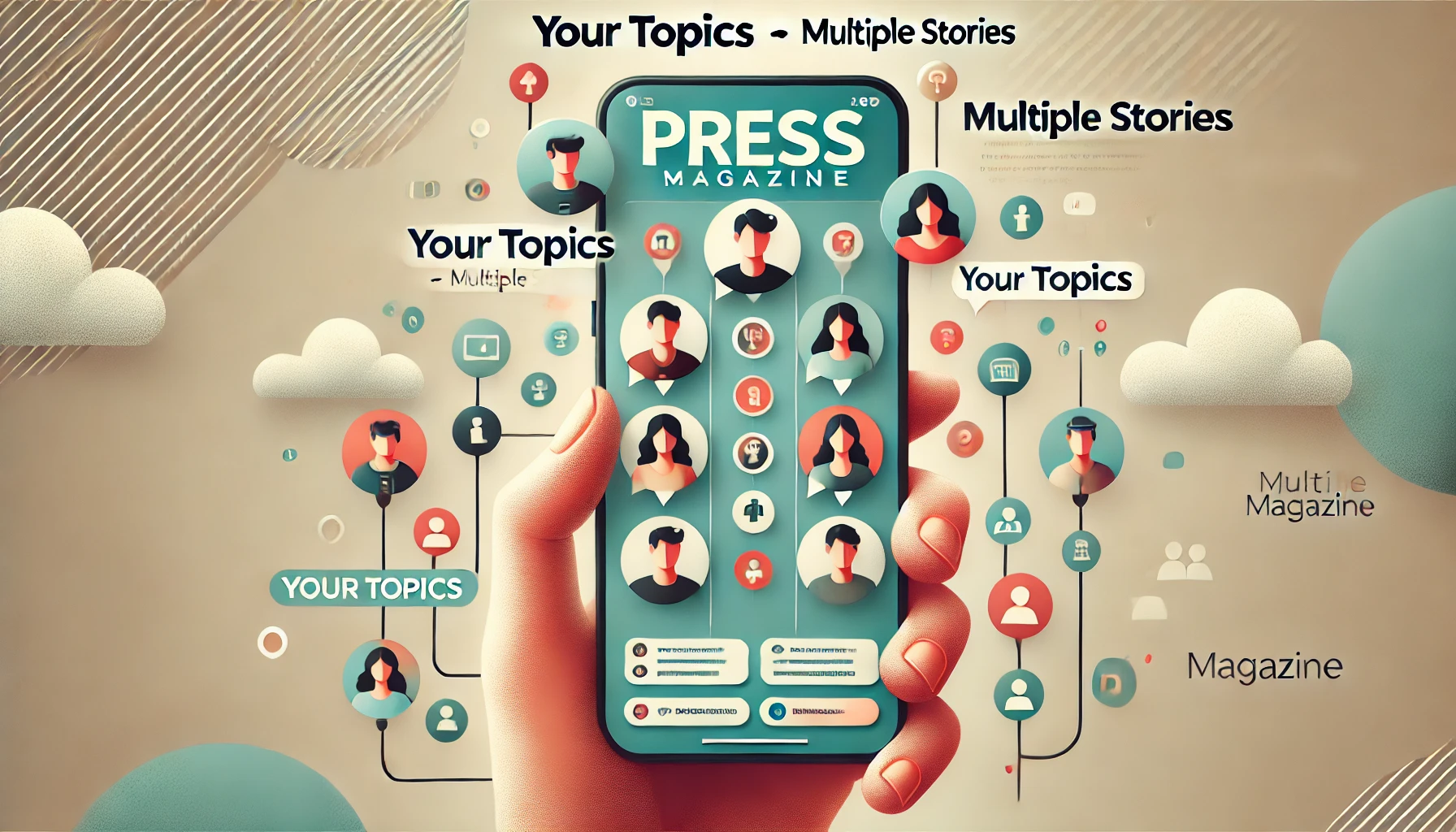Introduction: Embracing a Multitude of Stories
In an ever-evolving content landscape, the art of storytelling is not just about conveying a single narrative but about mastering the craft of presenting multiple stories. This approach not only enriches the audience’s experience but also broadens the horizon of engagement, catering to a diverse range of perspectives, interests, and backgrounds. By exploring the concept of “Your Topics | Multiple Stories,” we delve into how various narratives can intertwine to create a rich tapestry of content that resonates on several levels.
What Is Exactly “Your Topics | Multiple Stories”?
The idea behind “Your Topics | Multiple Stories” is a strategy that involves the creation and delivery of content across various themes and subjects, tailored to appeal to different segments of an audience. This method allows creators to address a wider scope of topics, ensuring that there is something relatable for everyone. By defining this approach, content creators can maintain a dynamic and versatile presence, whether in digital media, literature, marketing, or broadcasting.
The Dominion of Personalization: Why It Matters
Personalization is the cornerstone of the “your topics | multiple stories” strategy. It recognizes and respects the unique preferences and needs of each viewer or reader. This tailored approach not only enhances user engagement but also fosters a deeper connection with the content, making it more relevant and impactful. Personalized storytelling adapts to the cultural, emotional, and intellectual context of its audience, thereby increasing the value and reach of the narratives shared.
Creating Multiple Stories to Engage Different Viewers
Crafting multiple stories involves a keen understanding of audience demographics and interests. It’s about recognizing that a one-size-fits-all approach does not suffice in today’s diverse content consumption landscape. Here are steps to create engaging multiple stories:
- Research and Segment Your Audience: Understand who your viewers are and what they care about. Segment them based on interests, demographics, and behavioral patterns.
- Tailor Content to Audience Segments: Develop storylines that specifically cater to each segment, ensuring relevance and engagement.
- Use Varied Content Formats: Employ a mix of formats such as videos, articles, podcasts, and infographics to tell these stories, playing to the strengths of each medium.
The Role of Major Themes in Connecting Your Topics | Multiple Stories
While diversity in topics is crucial, maintaining a common thread or major themes across stories helps in building a coherent brand identity or narrative arc. This commonality can be a shared value, a recurring character, or a consistent message that echoes through different stories, providing a sense of continuity and reliability that audiences appreciate.
Enhancing Emotional Engagement
A major theme is a powerful tool for amplifying emotional engagement. When audiences encounter a recurring theme across multiple stories, it can evoke stronger feelings and a deeper understanding of the content. This repeated exposure not only makes the theme more impactful but also makes the stories more relatable. For example, a theme of “identity” might be explored in a novel through various characters’ journeys towards self-discovery. Readers may see reflections of their own struggles and growth, which can make the stories more compelling and personal.
Building Brand Identity with Thematic Consistency
For content creators and brands, maintaining thematic consistency across different stories is crucial for building a recognizable and trusted identity. When a brand consistently communicates a particular theme, it becomes associated with that narrative element. This consistency helps audiences know what to expect and reinforces the brand’s message and values. A brand that regularly highlights Your Topics | Multiple Stories of “innovation,” for instance, not only attracts an audience interested in technological advancements and creativity but also establishes itself as a thought leader in the space.
Cross-Platform Storytelling
The integration of major themes is particularly effective in cross-platform storytelling. Whether through social media, blogs, podcasts, or video content, a consistent theme can ensure a seamless experience for audiences interacting with various forms of media. For example, a campaign on social and environmental responsibility can feature blog posts about sustainable practices, Instagram stories highlighting green technologies, and podcasts interviewing experts in eco-friendly innovations. The theme of environmental responsibility connects these diverse formats, making the campaign more cohesive and impactful.
Challenges and Strategies
While there are many benefits to using major themes, there are also challenges, such as avoiding repetitiveness and ensuring flexibility across different stories. To overcome these, content creators can:
- Vary the Presentation: Change how the theme is presented in each story to keep it fresh and engaging.
- Include Diverse Perspectives: Incorporate a wide range of viewpoints on the theme to enrich the narrative and broaden its appeal.
- Connect with Current Events: Tie the themes to current events or trends to make the stories more relevant and timely.
The Common Thread That Connects Several Stories
The effectiveness of Your Topics | Multiple Stories often hinges on a subtle yet powerful common thread. This could be a thematic element like resilience, innovation, or community. By weaving this thread through various narratives, stories from seemingly disparate topics can resonate together, amplifying the impact and relevance of each individual story.
The Impact of Stories
Stories have the profound ability to influence, teach, and inspire. They shape perceptions, drive changes in behavior, and can even alter societal norms. The impact of a well-told story is immeasurable, particularly when it connects emotionally with its audience, motivating action and fostering a deeper understanding of complex issues.
Advantages of Multiple Stories in Different Social Media Platforms
Increased Reach Through Diverse Content
One of the primary advantages of using multiple stories across different social media platforms is the ability to reach a broader audience. Each platform has their special demographic and person behavior patterns. For instance, while Instagram may attract a younger audience interested in visual content, LinkedIn is frequented by professionals seeking insightful articles and industry updates. By crafting stories that cater to the specific audience of each platform, creators can maximize their reach, ensuring that their message is seen by a wide and varied audience.
Enhanced Engagement with Varied Content Formats
Social media platforms each support different types of content, from text and images to videos and live streams. Utilizing multiple stories allows creators to experiment with various formats, keeping content fresh and engaging. For example, a story about environmental conservation can be told through a detailed blog post on Facebook, a photo series on Instagram, and a discussion video on YouTube. This not only caters to the preferences of different audiences but also encourages deeper engagement as users interact with the content in the format they prefer most.
Tailored Messaging for Platform-Specific Audiences
Each social media platform offers unique tools and features that can enhance the storytelling experience. Twitter’s real-time nature is ideal for urgent news updates and quick engagements, while Pinterest’s board system can be used to create thematic story collections. By tailoring messages to fit the strengths and user expectations of each platform, content creators can more effectively communicate their stories, ensuring that each narrative is optimized for impact and comprehension.
Consistent Brand Presence Across Channels
Using Your Topics | Multiple Stories across various platforms also helps in building a consistent brand presence. Even if the stories vary in format or detail, maintaining a consistent theme or style helps reinforce brand identity. This consistency ensures that no matter where the audience encounters the brand, they receive a unified experience that strengthens their understanding and trust in the brand’s message.
Testing and Feedback for Content Optimization
The diverse environments of social media platforms provide a fertile ground for testing different types of stories and content strategies. Creators can use insights and analytics tools provided by these platforms to see how different stories perform in terms of engagement, reach, and conversion. This data can then be used to refine content strategies, focusing on what works best for each audience segment and platform.
Conclusion: The Power of Multiple Narratives
In conclusion, “Your Topics | Multiple Stories” is a compelling strategy that caters to the diverse interests and needs of today’s audience. By effectively employing this approach, content creators can not only enhance engagement but also build a more inclusive and resonant brand. Whether through personalization, thematic connections, or strategic content deployment across platforms, the power of multiple stories lies in their ability to weave singular threads into a captivating narrative quilt, each piece echoing a unique yet unified voice.


